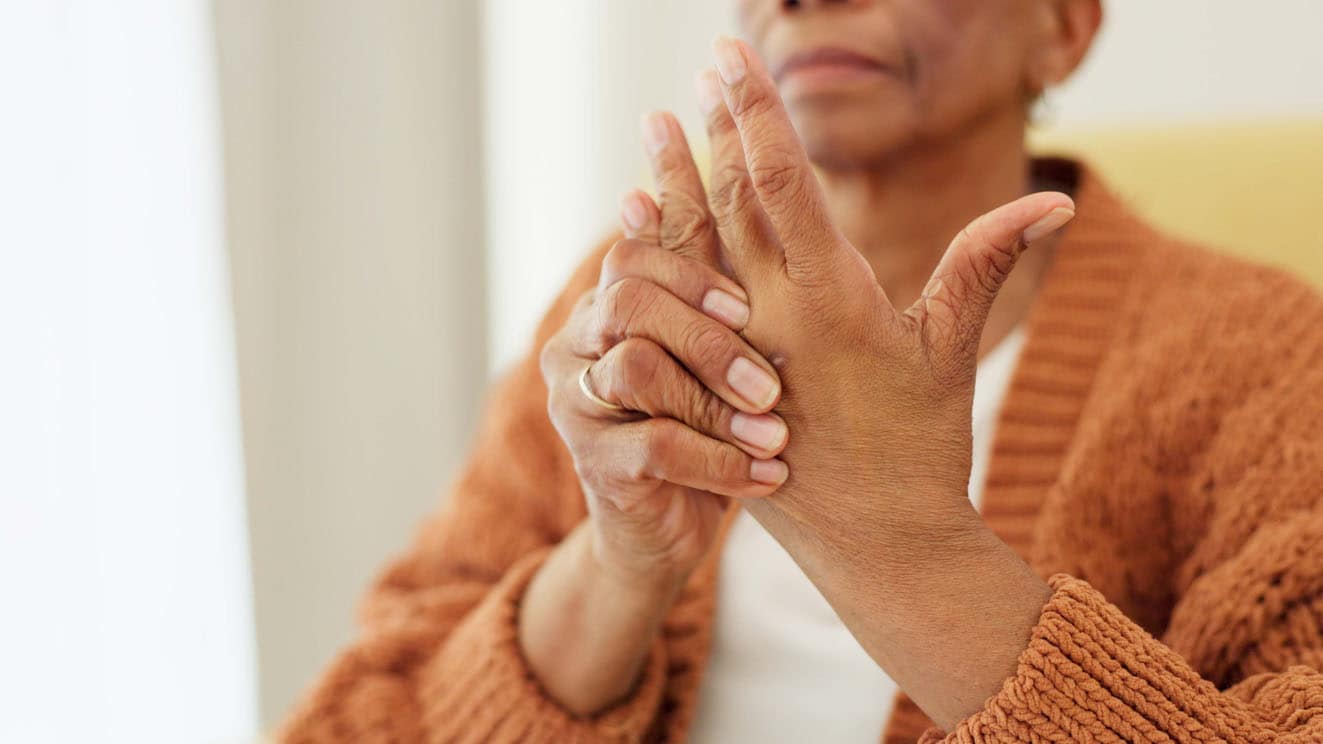Key points
- Rheumatoid arthritis (RA) causes pain, swelling, and stiffness in the joints.
- There’s no cure for RA, but you can manage and treat it with medicines and lifestyle changes.
- It’s best to diagnose and treat RA early to avoid joint damage and worsening symptoms and complications.
- Doctors diagnose RA through a physical exam, X-rays, lab tests, and a review of a patient’s health history.

Overview
RA is an autoimmune disease
- RA is a disease in which the immune system attacks the body's own tissues.
- This causes damage to the joints in the hands, wrists, and knees.
- The damage from RA can result in:
- Long-lasting (chronic) pain.
- Swelling.
- Balance issues.
- Deformed joints.
- Long-lasting (chronic) pain.
- RA can also affect the lungs, heart, and eyes.
RA limits physical activities and social connections
- RA can limit enjoyment of some life activities.
- People with RA may experience social isolation.
- RA can make it hard to do physically demanding or fast-paced work.
RA can be managed
- There is no cure for RA. But it can be managed.
- You can practice self-care and take medicines to reduce pain and limit complications.
Signs and symptoms
RA symptoms include:
- Pain, aching, or stiffness in more than one joint.
- Tenderness, redness, warmth, and swelling in joints.
- Weight loss.
- Fever.
- Fatigue or tiredness.
- Weakness.
Flares and remission
People with RA may experience:
- Flares—when symptoms suddenly appear or get worse.
- Remission—when symptoms get better or go away.
Things that increase risk for RA
The causes of RA are not known.
Smoking
Smoking can increase your risk of getting rheumatoid arthritis and can make arthritis worse.
Smoking can also make it harder to be physically active, which is important for managing arthritis symptoms.
If you want to quit smoking, help is available.
Visit How to Quit, call 1-800-QUIT-NOW, or text QUITNOW to 333888.A
Factors linked to RA
Factors that may be linked to RA:
- Age—RA risk increases as people get older. It’s highest among adults 50 to 59.1
- Sex—Women are two to three times more likely to have RA.1 Women who haven’t given birth may have a greater risk of RA.
- Early life exposures—Children whose parents smoked were more likely to develop RA as adults.2 Also, adults from lower-income families may have a higher risk of RA.3
- Family history—Certain genes can increase the risk of RA, such as the human leukocyte antigen (HLA) class II gene.
Diagnosis
Finding out if you have RA
Doctors can diagnose RA by doing:
- A physical exam.
- X-rays.
- Lab tests.
- A review of your health history.
Expert Care
It's important to get diagnosed with RA as soon as possible so you can start treatment.
- Rheumatologists—doctors who specialize in arthritis care—should diagnose and treat RA.
- Early treatment helps prevent symptoms from getting worse and doing damage to your joints.

Treatment options
A group of drugs, called disease-modifying antirheumatic drugs (DMARDs) are used to treat RA. These may help to:
- Slow RA from getting worse.
- Control joint swelling.
- Prevent joints from becoming deformed.
If your RA does not respond to initial treatment, your doctor may give you medicines called biologics, which are a type of DMARD. These:
- Block specific parts of the immune system that cause RA symptoms.
- Can reduce the progression of joint damage from RA.
Self-care for RA
Besides medicines, there are things you can do on your own to manage RA.
Self-care tips
- Be physically active.
- Keep a heathy weight.
- Avoid injuries to joints or doing activities that have repetitive motions like repeated knee bending.
- Stop smoking.
Learn about other self-care strategies for arthritis, including RA, that can help you feel better.
- Message and data rates may apply.
- Smith MH, Berman JR. What is rheumatoid arthritis?. JAMA. 2022;327(12):1194. doi:10.1001/jama.2022.0786
- Yoshida K, Wang J, Malspeis S, et al. Passive smoking throughout the life course and the risk of incident rheumatoid arthritis in adulthood among women. Arthritis Rheumatol. 2021;73(12):2219–2228. doi:10.1002/art.41939
- Xu Y, Wu Q. Prevalence trend and disparities in rheumatoid arthritis among US adults, 2005–2018. J Clin Med. 2021;10(15):3289. doi:10.3390/jcm10153289
- Centers for Disease Control and Prevention. National Center for Health Statistics. Accessed April 8, 2024. https://www.cdc.gov/nchs/fastats/leading-causes-of-death.htm
